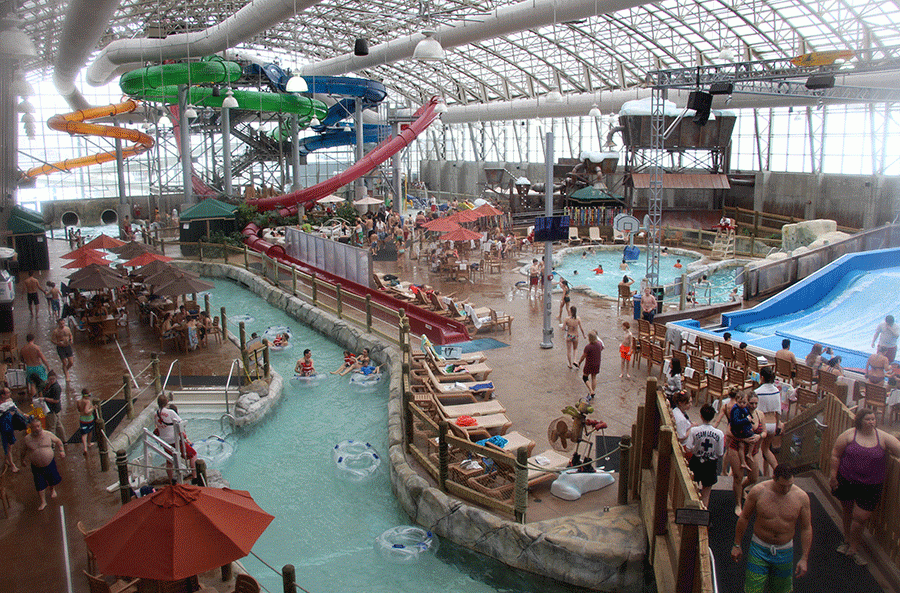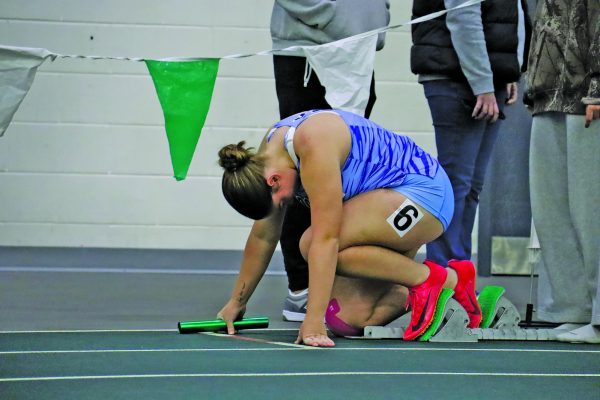Filling the seasonal gaps at Vermont ski resorts
With Vermont projected to receive primarily rain precipitation year round in roughly 30 to 40 years according to vt.climate.org, the theme for the future seems to be technology and weatherproof investments when it comes to the state’s mountain resort recreation.
At this point, the larger Vermont resorts like Jay Peak, Okemo, Killington, Stowe, Smugglers Notch and Sugarbush all have and are taking advantage of new technology and sustainable development options.
Ski Vermont Communications Manager Chloe Elliott noted that all of Vermont’s resorts combine for $900 million dollars in direct spending per season, and $700 million in indirect and induced spending. “Winter recreation is integral to the wellbeing and future of tourism and recreation in Vermont,” said Elliott. “Tourism makes up 10 percent of Vermont’s gross domestic product, and ski tourism makes up approximately one third of that.”
For now, resorts are taking things on a season-to-season basis, but both current and future development plans are shining light on what ski resort recreation might look like in the long run for Vermont.
Okemo Public Relations Director Bonnie MacPherson says that they have been looking into ways that they can better utilize the assets they already have. In terms of development, she noted that they are looking at capital expenditures and thinking of things like doing snow tubing in the summer on a specialized surface.
At Jay Peak, General Manager Steve Wright places an emphasis on the importance of “climate independent” amenities. Jay is home to Vermont’s only indoor waterpark and an indoor ice arena. Wright noted that along with their championship golf course, they are looking to install soccer fields too. “To an extent, some of these assets are summer based and don’t rely on ‘snow’ to be successful,” said Wright. “They still require relatively ‘good’ weather in order to operate.”
Candice White, vice president of communications and brand management for Sugarbush, says that they have been a year-round destination for years. “Summer business is comprised of mountain activities like mountain biking, zip-lining, and disc golf to name a few,” says White. “We are always looking to grow summer business, but winter still is the bulk of our business.”
In recent years, Killington Mountain Resort has been heavily investing in their mountain biking options with a bike park focus. Michael Joseph, communications and public relations manager for Killington, says that like skiers, mountain bikers travel for their sport making them an appealing demographic to try to capture.
At Smugglers Notch, Public Relations Director Mike Chait says that the construction of their new indoor family facility will provide a climate-controlled environment that isn’t going to be affected by wild weather swings. “It’s an indoor family fun complex, which is a great way for us to ensure that there will always be something to do here,” said Chait. “We can let Mother Nature throw whatever she wants at us, but we always have a backup plan.”
As far as “backup plans” might go, Chait used the less-than-ideal winter weather that occurred around Christmas time in 2015 as an example. “We didn’t have much snow or snowmaking weather with a lot of guests on property, so we were like sitting ducks,” said Chait. “Thankfully we were able to use a lot of our abilities that come with the activities that keep people entertained in the summer time and unroll them into wintertime programming when needed.”
Taking all of this in, Elliott points out that there really isn’t much “down time” for the industry. “When it’s not winter, we’re planning for winter, and when it is winter, we’re entertaining a full plate of events,” said Elliott. “For resorts who offer four-season activities and amenities, summer months make up approximately 10 percent of their annual revenue right now.”
When thinking about less-than-ideal seasonal snowfall totals, summer activities and events can be crucial in helping resorts recover as much as possible for a weak winter season. MacPherson says that everyone in the industry takes on the role of a farmer in a way: “Each season is a little different and weather dependent, so we hope for the best and do what we can with whatever the weather gives us.”
As far as winter goes, new and developed snowmaking technology will be a must for resorts to survive climate change projections. MacPherson says that at Okemo they cover ninety-eight percent of their trails with snowmaking capabilities.
Like many resorts, Okemo has upgraded the majority of their fleet of guns to make operations more energy efficient through the use of 1300 energy-efficient snow-guns. “We have made a huge investment in these energy efficient guns that have adjustable valves and allow us to direct the snowmaking with more accuracy on the trails,” said MacPherson.
White noted that they are optimistic about the future at Sugarbush but says that they are doing all they can to combat climate change. “Investing in low energy snow guns, solar farms, public transportation, recycling, composting and LED lighting are some of our bigger tasks,” said White. “We are also members of the National Ski Areas Association’ Climate Challenge, where we track our carbon footprint annually and set goals for reducing it each year.”
With some of the recent financial woes that occurred at Jay Peak, Wright noted that future development will be limited, and that the majority of their focus will be on managing the existing business that they have with more of a sustainability-forward perspective. He says that for now their largest opportunity for growth is lodging and activities during the seasonal May to November time period, where conferences and weddings are prominent.
As for Stowe’s projected growth, Jeff Wise, marketing and communications director for Stowe Mountain Resort, says that their goal is to increase revenue every year across various revenue centers by at least 3 percent.
In terms of development and revenue, White says that new construction at Sugarbush is approached by ensuring that they are building very tight, energy-efficient buildings. “Our most recent development was built in consultation with Efficiency Vermont and uses all Energy-Star-rated appliances,” said White.
Future investments are proving to be a necessity for resorts given the potential projections with climate change. MacPherson says that investing in and using technology to counteract the events that we are seeing as a result of global warming is very important. “The growth going forward is to make sure that we stay on top of technology, because you have to have a viable business in order to keep up and stay ahead of the game with all of this technology,” says MacPherson.
At Smuggs, Chait notes that nothing has been set in stone yet, but he says that they are looking down the road to incorporate some sort of artificial snow sliding surface for the summer months for skiing, snowboarding and tubing. “We are looking at options and opportunities like this,” said Chait. “Our unofficial policy is that we are here to wear people out, and we are ready to act on the fly to show people the experience that they are looking for.”
With investments happening across the state, Elliot believes that Vermont’s resorts will begin to offer an equal amount of summer and winter activities. “This will lead more of an equal revenue split when it comes to the summer months versus the winter months,” said Elliott.
Along with mountain biking at Killington, Joseph also pointed out that they have developed ropes courses, zip lines, a mountain coaster and a number of additional summer attractions to create more summer time recreation at the resort.
As some forms of mountain recreation can occur on a year-round basis, Chait says that Smuggs is working to continue expanding and developing their mountain bike program like Killington. “While this is specifically generalized as a summer time activity, who knows what kind of doors that it could potentially open up for winter biking activities that are beginning to expand across the state.”
To that end, like Elliott, Chait says that they are always looking for new ways to keep people entertained and active, and that he can see revenue becoming equal over time. “We are constantly looking into ways that we can merge both our summer and winter skills together and develop our programming,” said Chait.
When wrapping all of this together, it is clear that resorts are pushing for sustainability with year-round recreation options popping up at them year after year.
As winter storm Stella recently passed through, Chait made it clear that resorts aren’t giving up on winter. “It’s still definitely here,” said Chait. “What we are noticing is that not one season is going away, but it’s that the patterns are shifting for the seasons.”







